5 secrets of building a successful brand
Whether you're a big company or a single designer in your bedroom, Jonny Rowntree of Shout Digital explains how to build your brand.
It can be so easy to find yourself lost at sea when building a brand. Most often it's the step that comes just after you've had the genius idea which will form the bedrock of your commercial empire, and quite often it's the step that makes developing your product itself look easy.
Your brand refers to the way people identify your business as different to another in the same marketplace. McDonalds and Burger King both sell burgers, but their respective branding sets them apart and conveys to consumers their relative merits in comparison to the other.
Of course, by 'product' we're not just talking about the attributes we impose on an object. How to package a soft drink to consumers and considering how we want the drink to make people 'feel' is one thing, but we could just as easily be talking about a service.
Getting started
Imagine you're building up a laundry business. Brand building is about conjuring up images of convenience, friendly service and the status, which comes with immaculate clothing, then inviting people to share this vision every time they think of your service.
Then there's your own personal brand, how you put yourself across to those you work with. Consider the emotional response brought about by mentioning your name in a room full of people, that's your own personal brand and it's well worth paying attention to.
Whether you're branding a product, a service or your own self there is some points to bear in mind which can help you consider aspects of the way you communicate. Branding is all about communication and sending the right messages, making the right first impressions can give you a massive head start on the competition.
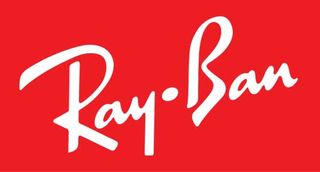
It's often handy to take a look at examples of branding done right to find useful tips. For instance, RayBan is a brand which has elevated itself above the herd when it comes to designer shades. Think about the RayBan logo. It's easy to read, just white letters on a red background, but everything about it conveys the values of a 'RayBan lifestyle'.
Get the Creative Bloq Newsletter
Daily design news, reviews, how-tos and more, as picked by the editors.
From the cool, almost signature-like font to the jaunty angle at which the words rest, the logo is unique, memorable and leaves a lasting impression.
01. Colour is king
This is an important lesson. A recent study conducted by the secretariat of the Seoul International Colour Expo found that 92.6 per cent of people think the visual aspects of a brand are the most important. No visual factor is more powerful than colour. We're brought up to associate certain colours with certain emotions to the point where it's almost like a second language.
Red evokes thoughts of passion, adventure and assertiveness. Purple is a royal colour, wise and creative. White makes us think of peace, purity and innocence. The list goes on, and while these associations change over time these are long-term cultural shifts which can take centuries.
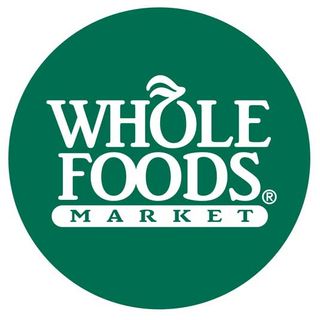
McDonalds, for example, uses red to invoke the carnal feeling of hunger, and yellow to promote feelings of happiness. Whole Foods Market uses a lot of green to showcase its core values of freshness, sustainability and health. Think about your brand, what colours does it look best in?
Going back to RayBan, they are quick to make sure people know who's wearing their shades and this is definitely something any business can use. Personal testimonials from high-profile customers are always a winner: if Victoria Beckham raves about a certain hat, women who want to be like her are sure to follow. At a grass roots level it's always worth letting consumers sample your product and make up their own minds for free.
02. Reach out with social media
Social media is a perfect place to build and perpetuate your brand's identity. When on social people are in a receptive, relaxed frame of mind and with the right tone of voice and on the right platform they can interact with your brand without ever feeling like they're being 'marketed at.'
With social, your quest for relevance is helped by researching your audience and assessing what platforms are right for you. A high-impact visual brand might do well on Instagram, whereas a brand with a strong, conversational tone will find a happy home on Twitter. Facebook is always good for traffic but can lose out when it comes to direct engagement so don't be fooled by the numbers and just stick with the biggest game in town.
Just as important as where you engage on social is how you engage. Establish a tone of voice for your brand, imagine your brand as a person and think about how that person would speak. What music does it listen to? What newspaper does it read? Brief everyone in your company on the ethos, goals and overall vision of your brand whether they're on your social team or not. Twitter gaffes are easily avoided if everyone is on the same page.
03. Make it accessible
How accessible is your brand and who is it accessible to? Pepsi took the initiative during the Great Depression and marketed itself as a refreshing beverage for the ordinary person with the following:
- Pepsi Cola hits the spot, 12 full ounces, that's a lot.
- Twice as much for a nickel, too, Pepsi Cola is the drink for you!
It might not be Byron, but it was a simple, clear message about meeting people's needs at a reduced cost. It worked. Pepsi also pioneered niche marketing thanks to a man named Edward F. Boyd. Boys, an African American, begun to market Pepsi directly to the black community by portraying them as upwardly-mobile middle-class citizens living the American Dream with a glass of Pepsi in hand.
While drawing criticism from racist groups of the day, the campaign was wildly successful from a commercial perspective and caused a huge, hitherto untapped market to identify with the brand. In this, Pepsi may well be one of the most progressive and forward-thinking companies of its generation.
04. Give it personality
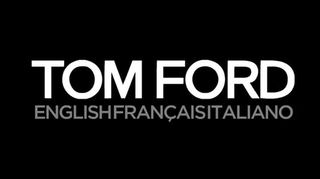
A brand should convey a state of mind, it should show personality. Tom Ford wanted to design a menswear brand for the man's man.
Setting out to create the first true luxury brand of the 21st century, he focused on its Italian roots, the attention to detail and superior design. Use of black in his designs conveys formality, sophistication and promotes that feeling of luxury in every stitch.
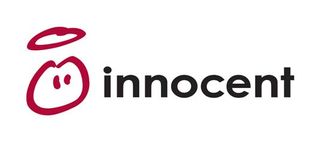
Innocent Drinks, by contrast, set out with a more humble mindset to evoke, but with more than humble ambition. Designing their own branding in-house in 1999, they opted for a design refresh in 2001 on the condition that the agency, Pearlfisher, understood and incorporated the three main concepts of the Innocent philosophy.
The branding had to feel homemade, natural and 'posh'. At the time the latter didn't have the negative connotations it carries now, but even to this day the enthusiasm with which they've pursued the first two is admirable.
Innocent's office is decorated with fake trees, grass and plants. Their canteen area has park benches for seating. Even their company vehicles are decorated with fake grass and shrubbery.

The creation of wooly hats at the hands of knitters nationwide was part of a winter marketing campaign with a percentage of sales going to charity. This all-encompassing strategy invites a holistic view of the brand and sends a clear message.
05. Be subversive
Car manufacturers Ford endeavour to be seen as a solid, trustworthy brand. When you think of a Ford car, you're encouraged to think of stability, of sturdy American engineering you can rely on to keep your whole family safe on the roads.
Their primarily blue colour scheme is the starting point for this. Their brand guidelines are very strict when it comes to how associates are allowed to use their logo and branding. From their front-loaded bold font to the amount of white space allowed around the logo itself, everything has been carefully designed to promote this idea of stability.
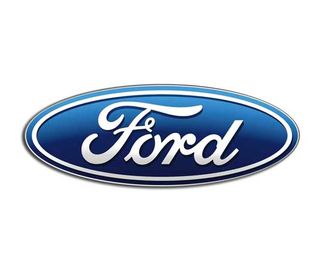
Of course, once your brand has been so strongly established, you can then subvert it on your own terms. Finding itself struggling in the USA, Ford commissioned an agency to create a web series on YouTube featuring a puppet called Doug.
Despite the protests of their HR department, Ford used humour to subvert their own brand identity and show a lighter side. This resulted in 4 million views, 44,000 new Facebook fans and the metric measuring the possibility of purchasing a Ford Focus jumping up by 60%!
Brand building can be a chore or it can be an invigorating and exciting. journey. The key is always planning. It's hard to change direction (and thus, the public's perception of you) once steam has built up. With the proper research and a clear idea of the persona behind your brand it can snowball into an identity that consumers will love and go out of their way to engage with.
Words: Shout Digital
Shout Digital is a full service digital agency, headquartered in Newcastle upon Tyne, working for clients including Elanders UK.
Like this? Read these!
- Create a perfect mood board with these pro tips and tools
- The ultimate guide to logo design
- Useful and inspiring flyer templates

Thank you for reading 5 articles this month* Join now for unlimited access
Enjoy your first month for just £1 / $1 / €1
*Read 5 free articles per month without a subscription

Join now for unlimited access
Try first month for just £1 / $1 / €1
The Creative Bloq team is made up of a group of design fans, and has changed and evolved since Creative Bloq began back in 2012. The current website team consists of eight full-time members of staff: Editor Georgia Coggan, Deputy Editor Rosie Hilder, Ecommerce Editor Beren Neale, Senior News Editor Daniel Piper, Editor, Digital Art and 3D Ian Dean, Tech Reviews Editor Erlingur Einarsson and Ecommerce Writer Beth Nicholls and Staff Writer Natalie Fear, as well as a roster of freelancers from around the world. The 3D World and ImagineFX magazine teams also pitch in, ensuring that content from 3D World and ImagineFX is represented on Creative Bloq.
